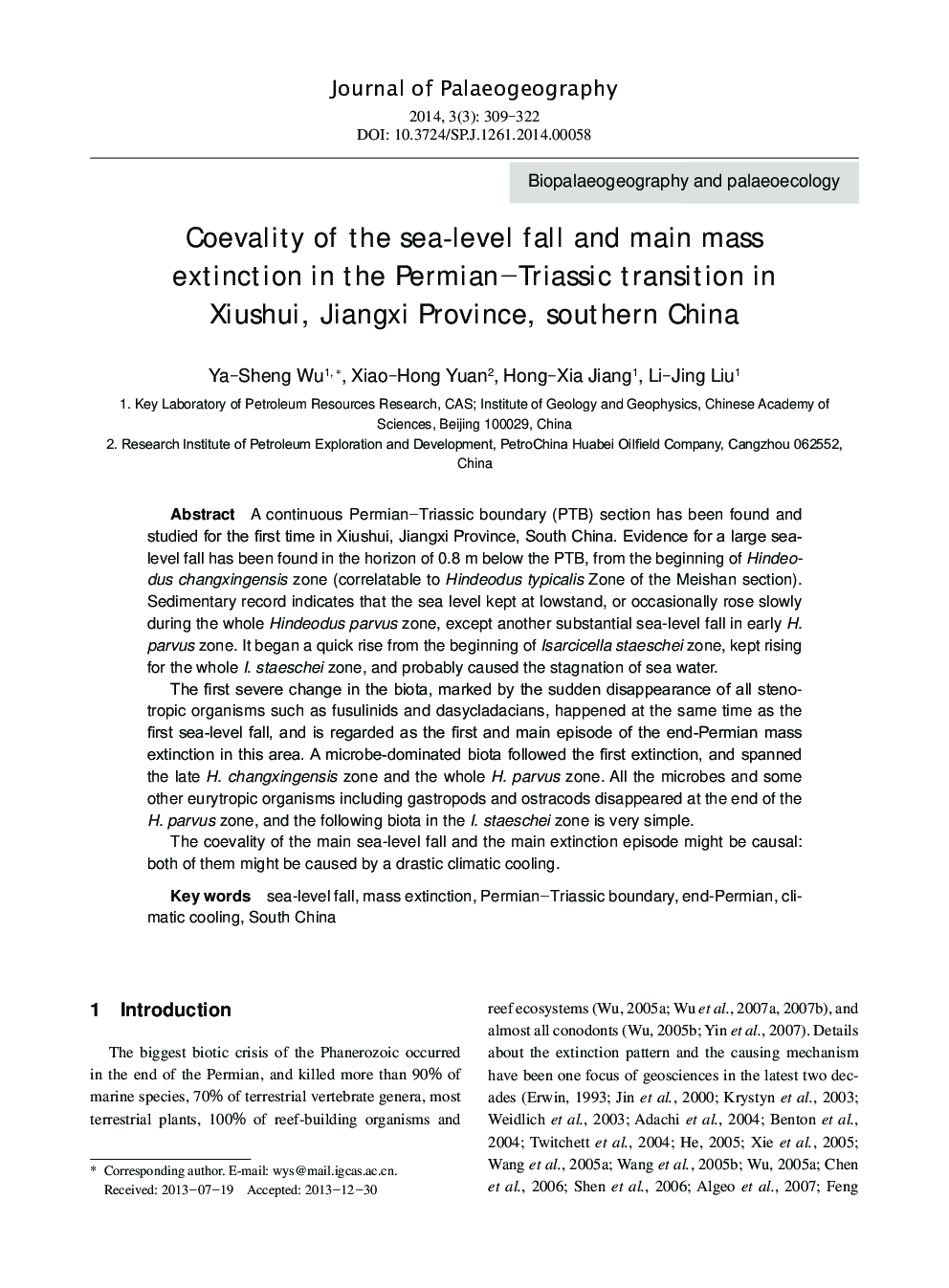| Article ID | Journal | Published Year | Pages | File Type |
|---|---|---|---|---|
| 4581023 | Journal of Palaeogeography | 2014 | 14 Pages |
A continuous Permian-Triassic boundary (PTB) section has been found and studied for the first time in Xiushui, Jiangxi Province, South China. Evidence for a large sea-level fall has been found in the horizon of 0.8 m below the PTB, from the beginning of Hindeodus changxingensis zone (correlatable to Hindeodus typicalis Zone of the Meishan section). Sedimentary record indicates that the sea level kept at lowstand, or occasionally rose slowly during the whole Hindeodus parvus zone, except another substantial sea-level fall in early H. parvus zone. It began a quick rise from the beginning of Isarcicella staeschei zone, kept rising for the whole I. staeschei zone, and probably caused the stagnation of sea water.The first severe change in the biota, marked by the sudden disappearance of all stenotropic organisms such as fusulinids and dasycladacians, happened at the same time as the first sea-level fall, and is regarded as the first and main episode of the end-Permian mass extinction in this area. A microbe-dominated biota followed the first extinction, and spanned the late H. changxingensis zone and the whole H. parvus zone. All the microbes and some other eurytropic organisms including gastropods and ostracods disappeared at the end of the H. parvus zone, and the following biota in the I. staeschei zone is very simple.The coevality of the main sea-level fall and the main extinction episode might be causal: both of them might be caused by a drastic climatic cooling.
